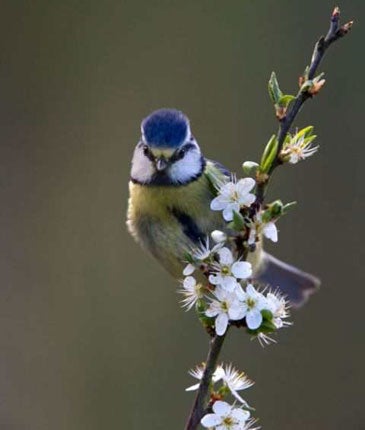Changing climate devastates UK species
Insects, birds and bats suffer from cold spring – and second sodden summer in a row

Much of Britain's wildlife, from butterflies to puffins to bats, suffered severely at the hands of the weather in 2008, the National Trust says.
A month-by-month diary compiled by wardens and conservationists on its hundreds of gardens, estates and properties in England and Wales shows that wild creatures were badly hit from the cold late spring and the sodden summer – the second in a row – although things picked up with the dry autumn. Insects in particular, and creatures that feed on insects, were the principal victims. Most butterflies, nearly all bee and wasp species, grasshoppers and crickets, crane flies (daddylonglegs) and mosquitoes were sharply reduced in numbers during the year.
Insectivorous creatures suffered in consequence, such as some bird species, especially the tit family, and nightjars (which feed on moths), as did bats, which also rely on moths for food. Some seabird species on trust coastal properties also had poor breeding seasons.
But, although many lost out, some were winners. Even among the butterflies, hit harder than almost everything else, a few species did well: the two "cabbage whites", the large and the small whites, had a successful year, perhaps because the poor weather also hit the parasites which tend to keep their numbers down. The purple emperor, the butterfly of the oakwoods in July, also did well.
Most remarkably, there was some indication that the large tortoiseshell butterfly, thought to have been extinct in Britain for at least 20 years, may have bred again on a trust property, the Branscombe Estate in south-east Devon. Several sightings have been made along the South Coast this summer, and some of these are thought to have been captive-bred releases or migrants from the Continent, but sightings in the Branscombe area raise the "tantalising possibility" that the large tortoiseshell may have bred, according to the trust's conservation adviser Matthew Oates, who specialises in butterflies.
The warm and dry autumn also meant that wild fungi were plentiful and autumn foliage had some handsome displays.
"A cold late spring, a wet summer, with few sunny days, and the long dry autumn has shown how dependent our wildlife is on the weather," Mr Oates said. "Many iconic species closely associated with the four seasons are having to cope with higher incidents of poor weather as our climate becomes more unpredictable.
"After two very poor years in a row, we desperately need a good summer in 2009, otherwise it's going to look increasingly grim for a wealth of wildlife in the UK. Climate change is not some future prediction of what might happen, it's happening now and having a serious impact on our countryside every year."
Counting the cost National Trust nature diary
*January: Red admiral butterflies continued to be the first butterfly sightings of the year.
*February: Sunniest since 1929 and white-tailed bumblebees were flying on many days.
*March: The large tortoiseshell butterfly, thought to be extinct in the UK, may have bred on National Trust land in Devon.
*April: Frost and snow hit bees hard. In mid-April the first chough eggs were laid in South Wales.
*May: Heavy rain occurred during late May, a critical time for early summer insects. Many nests failed including those of the blue and great tits, due to the lack of insect food.
*June: Coastal cliff-nesting birds, such as choughs and kittiwakes, bred late and reared few young. A poor summer for migrant insects.
*July: A good year for the purple emperor butterfly until it was hit by a vicious gale in early July. Puffin numbers on the Farne Islands were down by 35 per cent in five years.
*August: This was another year with an absence of the enemy of the English picnic, the wasp, due to the poor weather hindering nest development. The two cabbage white butterflies, the large white and small white, were unusually plentiful.
*September: A remarkable scarcity of the common autumn cranefly. This insects usually abounds in pest proportions but was all but absent this year.
*October: A cold and wet month sealed the fate of our bees.
*November: A surprising number of spring flowers, such as vibernum and aubretia, bloomed.
*December: Radio tracking of lesser horseshoe bats did not take place in North Wales, due to many being underweight .
Join our commenting forum
Join thought-provoking conversations, follow other Independent readers and see their replies
Comments
Bookmark popover
Removed from bookmarks